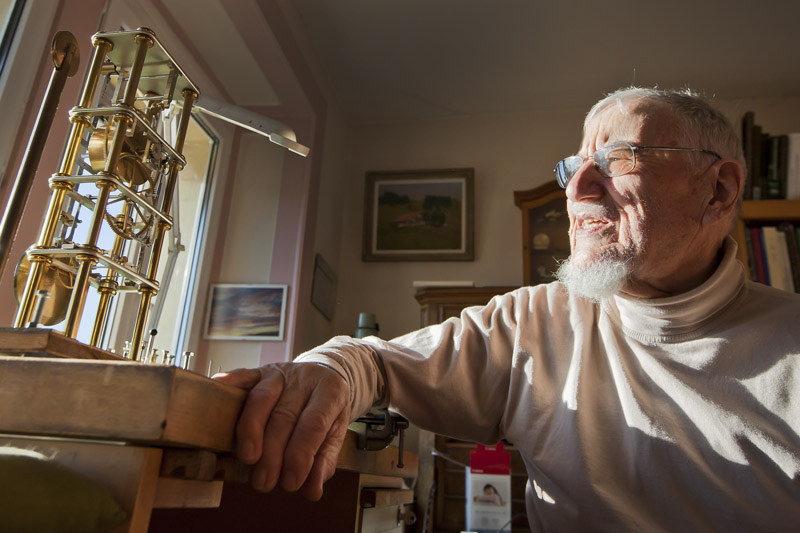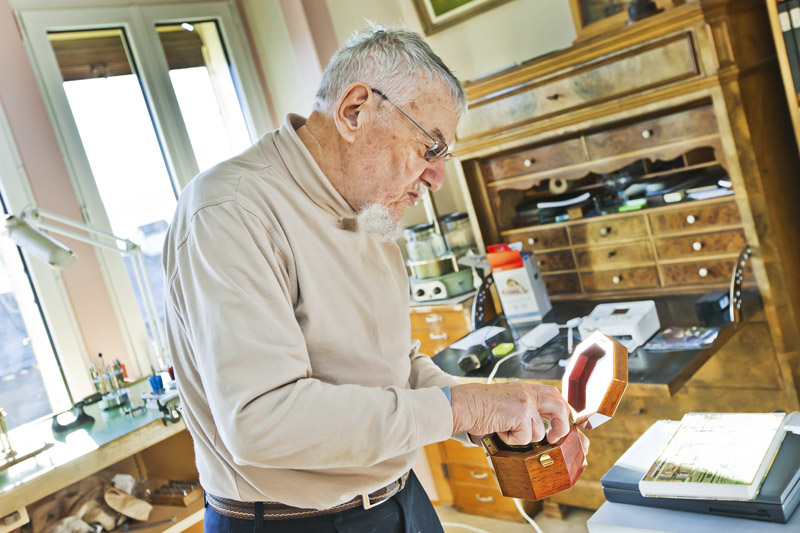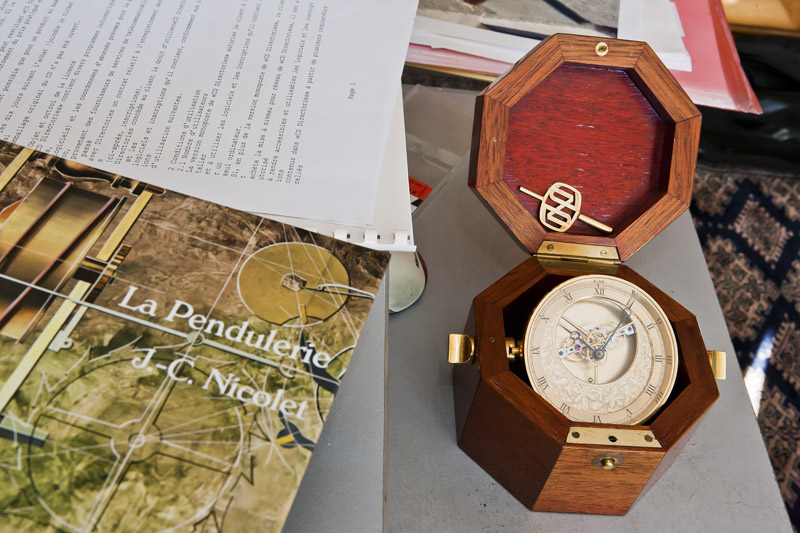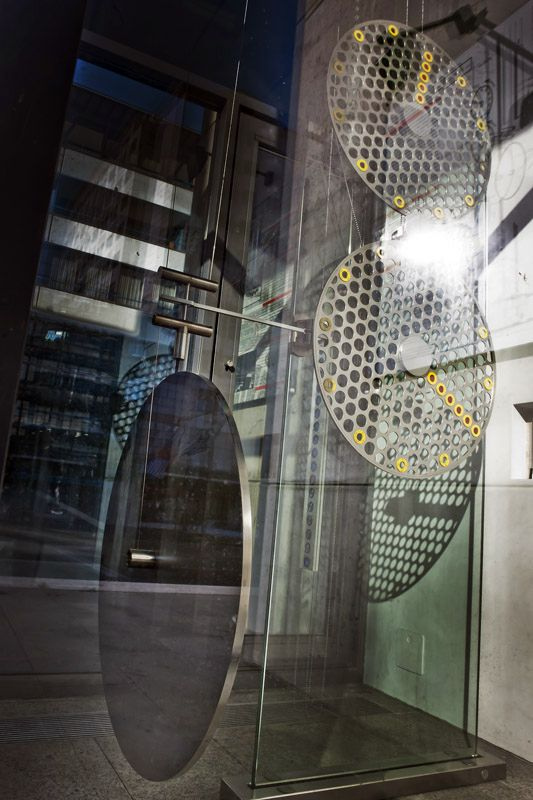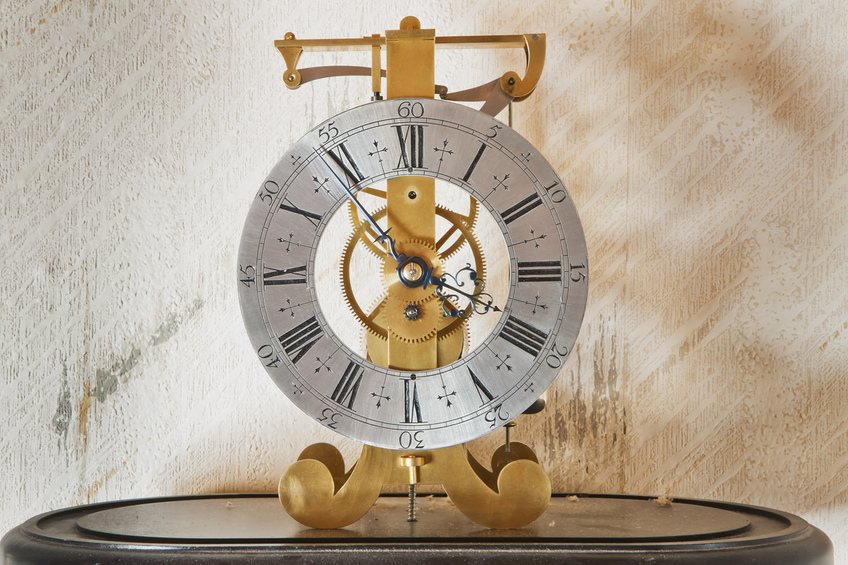

The genius from La Chaux-de-Fonds - Jean-Claude Nicolet
We pay well-deserved tribute to the self-effacing master watchmaker from La Chaux-de-Fonds . A lifetime dedicated to producing exceptional clocks and timepieces, enhancing the prestige of his hometown and contributing to the universal knowledge of horology.
The word orlogeur is obsolete today, a little like the goldsmith, the smelter, the furbisher, the engraver or the embroiderer, the orlogeur has a very specific definition. It refers to a watchmaker steeped in the all the arts and crafts of his industry. So how come the trade media and history books hardly mention this figure, who is considered one of the last living watchmaking geniuses by his peers?
Well, maybe because he spent his life teaching at the horology school of La Chaux-de-Fonds and only dedicated himself to watchmaking in his spare time. Furthermore, his work never benefitted from much media coverage despite being highly creative and innovative.
Discretion as a motto
His workshop in the heights of La Chaux-de-Fonds only contains a few tools, a lathe and a wealth of treasures, valuable archives and rare components, and his own works, distillates of the chronometric sciences. It all deserves a place in history far more important than the few unique pieces that he is about to pass on to his children. Having crossed the eighty-year mark, Nicolet talks about his coming death in a casual way, proclaiming his evangelical faith, which foresees resurrection and redemption. So, faced with this inevitable outcome, he remains serene. He only fires off an off-colour salvo when his memory fails, his blurring view prevents him from carrying out extremely precise tasks, or when he can no longer rely on the dexterity of his once golden fingers. Of course, he was never one to hold his tongue – and that sometimes earned him a cold shoulder. He always showed bewildering and common sense and liked to swim against the stream. He most definitely isn't going to change now.
In 2011-2012, Antoine Simonin publishers reprinted his book Pendulerie, which is to this day a reference work for generations of watchmakers. As for the municipality of La Chaux-de-Fonds, they might have celebrated the twentieth anniversary of the famous Espacité tower. The 125th anniversary of the birth of Le Corbusier in this town where horological city planning is listed as a World Heritage Site with UNESCO was as good a reason as any to ignoreour orloger. Inevitably, an architectural celebration was bound to take preference over horological events. That's why it is now important to make amends and remindeveryone that Jean-Claude Nicolet designed Esphor, Espacité's clock, which is renowned for its simplicity and micromechanical genius. The clock is partly visible on one side of the building through a display window. The viewer can just guess what happens higher up by looking at the case housing the world's longest pendulum (twenty-five metres).
The world’s simplest mechanical watch
“In 1988, when I was teaching watch repair and restoration at the horology school of La Chaux-de-Fonds, I suggested we create a one-of-a-kind clock, in order to enter a competition organised by Neuchâtel's State Council.
(…) The innovative scope of this project was great. Finally, after much hesitation, the school decided to manufacture a feasibility prototype”, wrote Nicolet in one of his memoires. That very prototype featured many of the incredible innovations that were then to be found in the model built alongside the tower, such as the absence of gears and its extreme simplicity. A single wheel acts simultaneously as a driving wheel, minute wheel and escape wheel. A twenty-four-tooth star wheel displays the hours. The exclusive escapement is inspired by one Henri Sulley designed for pocket watches in 1721 but with a few necessary alterations for the pendulum. The prototype had a 19.5-metre-long regulating pendulum, because a longer one could not fit in the school corridors. The final touch was a drive device using weights and counterweights, a Huygens-type endless chain and automatic and electrical winding.
Local pride
After seeing the excellent results the prototype yielded, particularly in terms of chronometric precision, the Esphor was built and placed on the Espacité tower and equipped with a pendulum measuring twenty-five metres. It is the tallest pendulum ever made.
“I find the Espacité clock more complicated and thus less interesting than the prototype”, Nicolet points out with that characteristic and disconcerting frankness which sometimes gained him enemies that has not always made him friends.
At any rate, 2012 marked the twentieth anniversary of this fourteen-story building, which is still unconsciously identified by many in La Chaux-de-Fonds as being on la Place Sans Nom, or No-Name Plaza. This compelled the city and the Lausanne-based architectural firm of Richter, Dahl Rocha and Associates, under the leadership of Jacques Richter, to rummage around in their archives. But nothing happened, not even a celebratory get-together. “The technical prowess of the clock most certainly reflects the know-how, creativity and minutiae of the watchmakers in our town and region", says Eric Tissot, head of communications for La Chaux-de-Fonds."We are proud of Mr. Nicolet's work which is unquestionably an added value to La Chaux-de-Fonds. It absolutely deserves a much more central place in our communication strategies, both for locals and for tourists. This clock can be admired all year round and information is provided on a data sheet at the foot of Espacité.” Watch aficionados of the world, get on your marks; the detour is well worth it.
Who is Jean-Claude Nicolet?
In 1993, he was the first craftsman-designer to be awarded the Gaïa Prize, the highest distinction in the world of watchmaking. A few other renowned master watchmakers, who themselves respected and admired Nicolet, also won the prize: François-Paul Journe in 1994; Michel Parmigiani in 1995; Philippe Dufour in 1998; George Daniels in 2001; and Anthony G. Randall in 2003. Nicolet was born in 1932 in Les Ponts-de-Martel. He holds a federal Master's degree in watch restoration and is a certified operations technician. He worked for Cortébert Watch and Zenith before deciding to teach watchmaking and simultaneously becoming an independent watchmaker. He often came up with surprising and original creations in collaboration with his students. One example is the Audacieuse, an exceptional clock equipped with an 119-lost-strikes escapement and a single gear, which can be found in the collection of the International Museum of Horology. Another example is his astronomical clock with multiple complications (around twenty), which is considered the epitome of simplicity with only 653 pieces and a surprising endless chain system. This object, which took 5,000 hours to make, is sure to thrill the world's collectors.
Bibliography:
Books by Nicolet: Pendulerie. Reference book. Second Edition (Editions Simonin); Le taillage et le fraisage dans la réparation d’horlogerie; an autobiography, Miettes de Vie. Also, a number of articles on lesser-known aspects of horology. Dictionary of horology and glossaries.
Photo report: Grégory Maillot - info@point-of-views.ch


